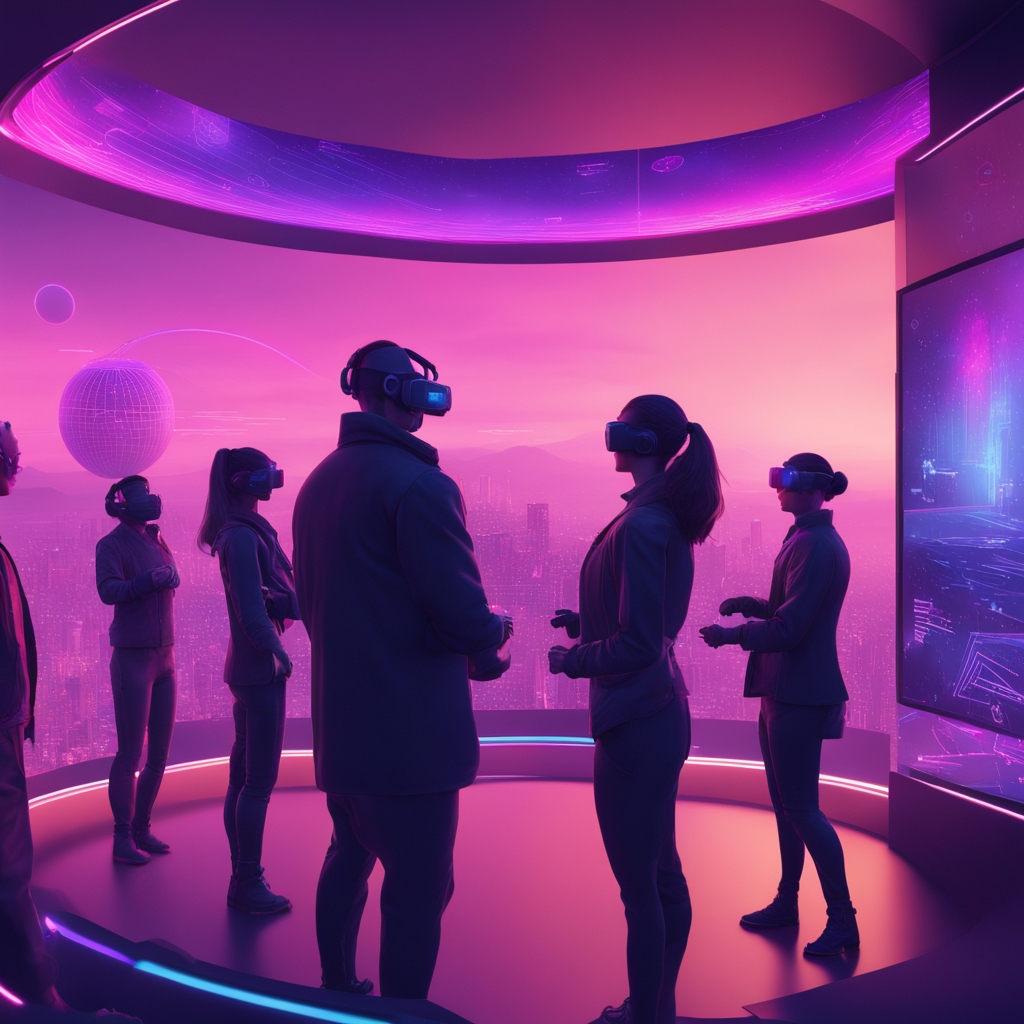Exploring Virtual Reality: A Gateway to Immersive Digital Worlds
Virtual Reality, or VR, is no longer just a concept confined to science fiction. Today, it’s a groundbreaking technology that allows users to step into entirely simulated environments and interact with them as if they were real. But what exactly is VR, and why is it revolutionizing industries worldwide? Let’s dive in.
What is Virtual Reality?
VR refers to the creation of immersive digital environments that simulate the real world or construct fantastical spaces. By leveraging advanced hardware and software, VR can trick our senses into believing we’re experiencing something authentic—whether it’s exploring a distant planet, engaging in intense battle simulations, or relaxing on a serene beach.
Key Components of VR
Creating a convincing virtual experience involves a combination of several technological elements:
- Head-Mounted Display (HMD):
The cornerstone of VR technology, the HMD is a wearable device that immerses users in the virtual world. With separate screens for each eye, it creates a stereoscopic effect, delivering a sense of depth and realism. Popular examples include the Meta Quest series, HTC Vive, and PlayStation VR. - Controllers:
These handheld devices enable users to interact with the virtual environment. Equipped with motion sensors, they allow actions like picking up objects, drawing, or even sword fighting in VR. - Tracking Systems:
Sensors or cameras track the movements of your head, hands, and sometimes even your entire body. This ensures the virtual world adjusts dynamically to your actions, enhancing the illusion of presence. - Software:
The soul of any VR experience, software creates the 3D environments, interactions, and scenarios users engage with. From video games to training simulations, the possibilities are endless.
Types of VR Experiences
VR isn’t a one-size-fits-all technology. Different types cater to varying levels of immersion and interaction:
- Fully Immersive VR:
Fully immersive systems completely engulf users in a digital world. Paired with high-end headsets and motion tracking, these are often used for gaming or complex simulations. - Semi-Immersive VR:
Offering a blend of virtual and physical elements, semi-immersive VR is often used for educational and training purposes, such as flight simulators. - Non-Immersive VR:
This involves experiencing virtual environments via standard screens, like computers or smartphones, without the need for specialized hardware. - AR and MR:
Augmented Reality (AR) overlays digital content on the real world, while Mixed Reality (MR) blends real and virtual environments seamlessly. Though distinct, these are often considered part of the broader VR ecosystem.
Applications of VR
VR isn’t just about entertainment. Its versatility makes it a transformative tool across various fields:
- Gaming: Immersive gameplay offers a level of interactivity and excitement unmatched by traditional gaming platforms.
- Training and Education: From medical procedures to military operations, VR provides a safe, controlled environment for learning and practicing skills.
- Healthcare: Therapists use VR for rehabilitation exercises and exposure therapy, helping patients in innovative ways.
- Architecture and Real Estate: Virtual walk throughs allow clients to explore properties or building designs before construction begins.
- Social Interaction: Platforms like VRChat enable users to connect and collaborate in virtual spaces, making distant social interactions more engaging.
How Does VR Work?
VR creates an illusion of reality by engaging multiple senses and responding to user actions in real time:
- Stereoscopic Display: By showing slightly different images to each eye, VR headsets mimic the way we perceive depth in the real world.
- Motion Tracking: Sophisticated sensors ensure the environment reacts dynamically to your movements, maintaining the illusion of presence.
- Haptics: Adding tactile feedback, such as vibrations or pressure, makes the experience more realistic and engaging.
The Future of VR
As technology advances, VR continues to break boundaries, becoming more accessible and versatile. With applications ranging from entertainment to scientific research, its potential is virtually limitless. Whether you’re a gamer, a professional, or just curious, there’s a VR experience waiting to captivate you.
So, why not take the plunge and explore the digital frontier? Virtual Reality isn’t just a glimpse into the future—it’s here, and it’s transforming the way we live, learn, and connect.

